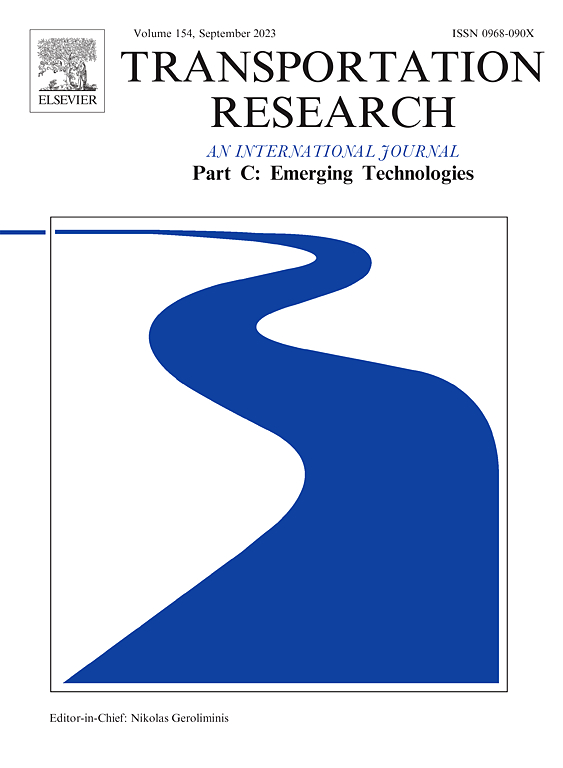Planning charging stations for mixed docked and dockless operations of shared electric micromobility systems
IF 7.6
1区 工程技术
Q1 TRANSPORTATION SCIENCE & TECHNOLOGY
Transportation Research Part C-Emerging Technologies
Pub Date : 2025-02-01
DOI:10.1016/j.trc.2024.104989
引用次数: 0
Abstract
Dockless electric micro-mobility services (e.g., shared e-scooters and e-bikes) have been increasingly popular in the recent decade, and a variety of charging technologies have emerged for these services. The use of charging stations, to/from which service vehicles are transported by the riders for charging, poses as a promising approach because it reduces the need for dedicated staff or contractors. However, unique challenges also arise, as it introduces docked vehicles at these stations to the existing dockless systems, and now riders can pick up and drop off e-scooters at both random locations and fixed charging stations. This requires incentives for riders to drop off vehicles at the stations and management strategies to efficiently utilize the vehicles at the stations. This paper focuses on such mixed operations of docked and dockless e-scooters as an example. It develops a new aspatial queuing network model for vehicle sharing and charging to capture the steady-state e-scooter service cycles, battery consumption and charging processes, and the associated pricing and management mechanisms in a region with uniform demand. Building upon this model, a system of closed-form equations is formulated and incorporated into a constrained nonlinear program to optimize the deployment of the service fleet, the design of charging stations (i.e., number, location, and capacity), user-based charging price promotions and priorities, and repositioning truck operations (i.e., headway and truck load). The proposed queuing network model is found to match very well with agent-based simulations. It is applied to a series of numerical experiments to draw insights into the optimal designs and the system performance. The numerical results reveal strong advantages of using charging stations for shared dockless electric micro-mobility services as compared to state-of-the-art alternatives. The proposed model can also be used to analyze other micromobility services and other charging approaches.
求助全文
约1分钟内获得全文
求助全文
来源期刊
CiteScore
15.80
自引率
12.00%
发文量
332
审稿时长
64 days
期刊介绍:
Transportation Research: Part C (TR_C) is dedicated to showcasing high-quality, scholarly research that delves into the development, applications, and implications of transportation systems and emerging technologies. Our focus lies not solely on individual technologies, but rather on their broader implications for the planning, design, operation, control, maintenance, and rehabilitation of transportation systems, services, and components. In essence, the intellectual core of the journal revolves around the transportation aspect rather than the technology itself. We actively encourage the integration of quantitative methods from diverse fields such as operations research, control systems, complex networks, computer science, and artificial intelligence. Join us in exploring the intersection of transportation systems and emerging technologies to drive innovation and progress in the field.

 求助内容:
求助内容: 应助结果提醒方式:
应助结果提醒方式:


